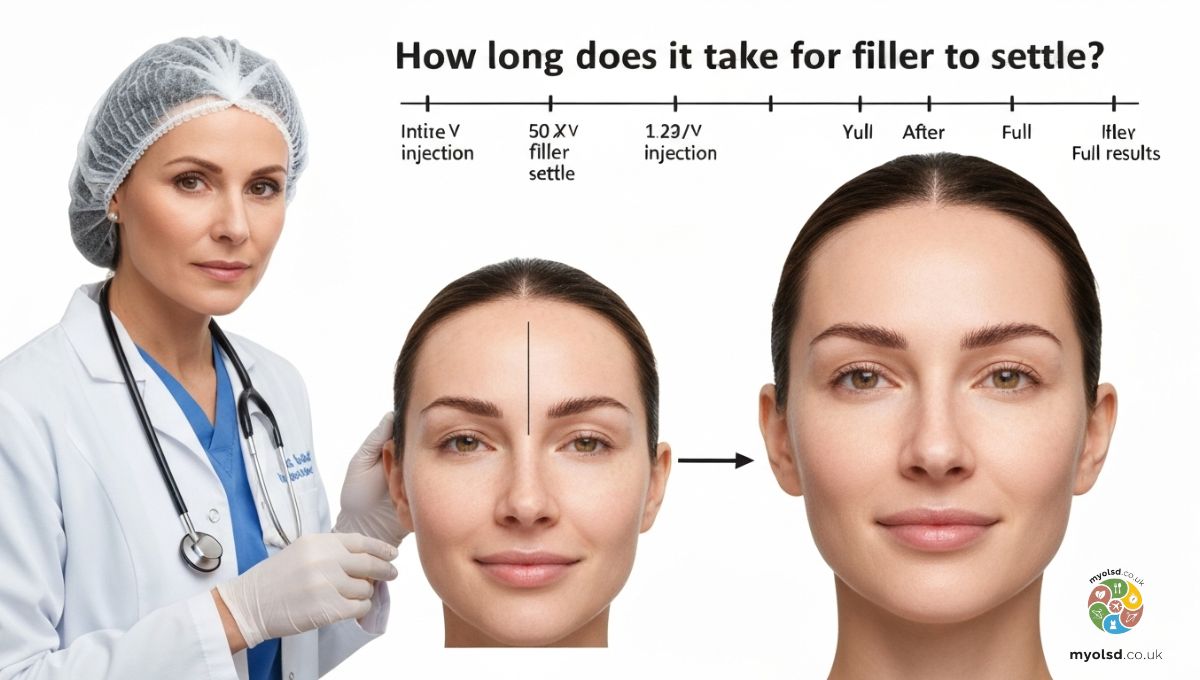Ever had a filler treatment and found yourself constantly checking the mirror, wondering if your lips or cheeks are looking right yet? You’re not alone waiting for your face to look just the way you imagined can feel like an endless game of patience. Swelling, tenderness, and little bumps can make it hard to tell if the filler has fully settled, leaving many of us frustrated or second-guessing the results.
In this blog, we’ll break down how long does it take for filler to settle and what to expect during the process. From the first few days to the final results, you’ll get clear timelines, practical tips for reducing swelling, and insights on when your new look will truly shine. By the end, you’ll know exactly what’s happening under the surface and feel more confident about your results.
Do You Know Your Dermal Filler Timeline?

The timeline for fillers varies depending on the area treated, the type of filler used, and your body’s natural healing response. Immediate swelling and redness are normal, and most patients notice visible improvement within the first week. However, full integration of the filler into your tissues usually takes two to four weeks, which is why patience is key.
Your body gradually absorbs and settles the filler, which allows your facial contours to look natural. Bruising and minor lumps may appear initially but usually diminish over the first few days. By understanding these stages, you can manage your expectations and enjoy smoother, more youthful results.
Bullet Points on a Dermal Filler Timeline
- Day 0: Injection, initial swelling, mild redness, tenderness.
- Day 1 to 3: Swelling peaks; bruising may appear; lips or cheeks may feel firm.
- Week 1: Swelling and tenderness reduce; visible results begin to show.
- Weeks 2 to 4: Filler fully settles; facial contours appear natural; minor touch-ups can be considered.
- Months 2 to 3: Final subtle improvements; tissues integrate completely.
- 6 to 24 months: Longevity varies depending on filler type; touch-ups may be needed.
Read more Article: How Long Does an AC Unit Last in Florida
What Are Dermal Fillers?
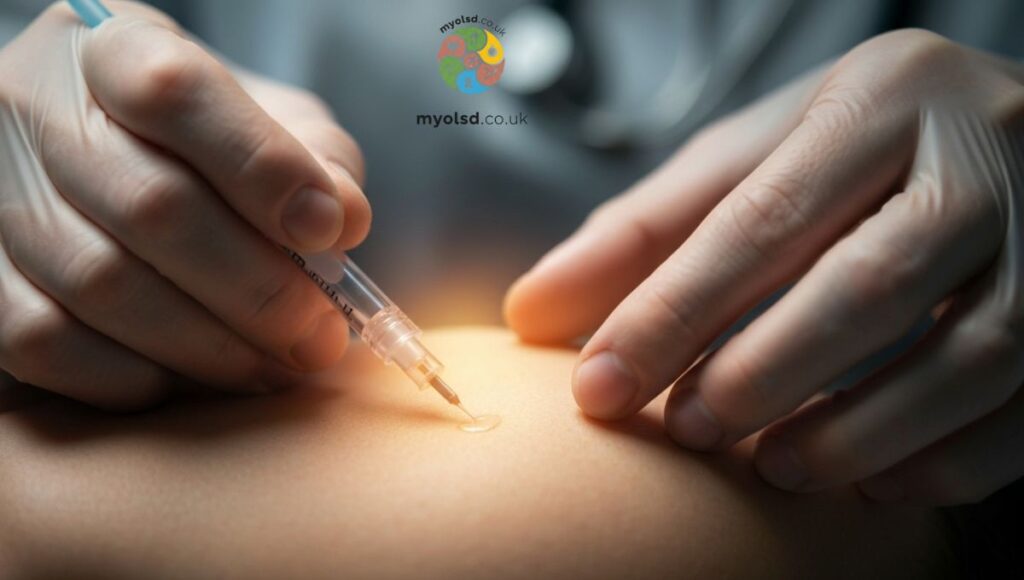
Dermal fillers are injectable substances designed to restore volume, smooth wrinkles, and enhance facial contours. The most common fillers contain hyaluronic acid, a naturally occurring substance in your skin that helps retain moisture and support collagen production. Other options include calcium hydroxylapatite, poly-l-lactic acid, and PMMA fillers, each with unique properties and longevity.
These non-surgical procedures are safe when performed by experienced professionals and can target multiple areas of the face, including lips, cheeks, jawline, tear troughs, and nasolabial folds. Understanding the filler type used in your treatment can help you anticipate how long it will take to settle.
What Areas Do Dermal Filler Treatments Address?
Different facial areas heal at different rates. For example, lips may show immediate shape but take 2 to4 weeks to settle fully, while cheek fillers integrate slightly faster due to larger tissue volume. Tear troughs are delicate, and swelling may persist longer, whereas jawline fillers can require extra patience due to firm tissues.
Types of Dermal Fillers
- Hyaluronic Acid (HA): Smooths fine lines, adds volume, and hydrates.
- Calcium Hydroxylapatite: Stimulates collagen and supports facial structure.
- Poly-L-Lactic Acid: Gradually restores volume, ideal for long-term rejuvenation.
- PMMA Fillers: Semi-permanent, providing long-lasting results.
Our Dermal Filler Line
Popular filler brands include Juvederm, Voluma, Volbella, Restylane, Radiesse, and Revanesse Versa. Each offers unique advantages depending on your facial anatomy and aesthetic goals.
Why Dermal Fillers Take a While to Settle
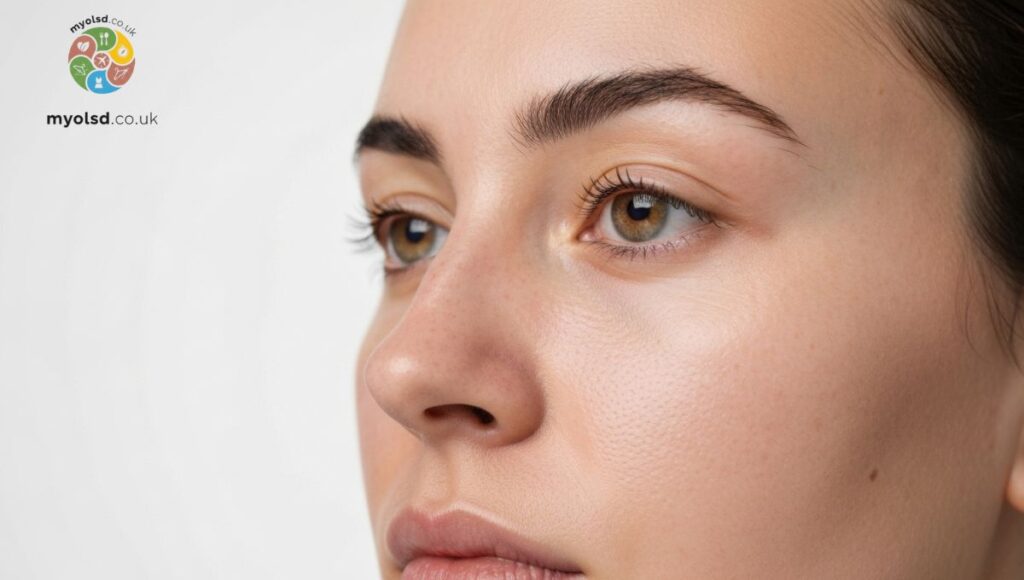
Filler settling is influenced by several factors, including tissue integration, swelling, bruising, filler type, and metabolism. Younger patients with resilient skin may see faster settling, whereas older patients with thinner or drier skin might experience extended recovery times.
Lip Fillers Have a Different Timeline
Lips are highly vascular, which makes swelling more pronounced. Full settling generally occurs within 2 to 4 weeks, although subtle improvements continue for several months. Bruising is common and usually resolves within 7 to 10 days.
Cheek Filler Results
Cheek fillers create volume and contour enhancement. Mild firmness and puffiness may persist for 1–2 weeks, with optimal results visible after 3 to 4 weeks as tissues integrate naturally.
Tear Trough Filler Expectations
This delicate area can show bruising and swelling longer than other regions. Visible improvement is gradual, typically settling within 2 to 4 weeks.
Restoring Your Jawline
Jawline fillers are firmer and often require longer settling times. Swelling may peak at 48 to 72 hours post-treatment, with subtle contour adjustments appearing over 2 to 4 weeks.
Dermal Filler Healing Stages
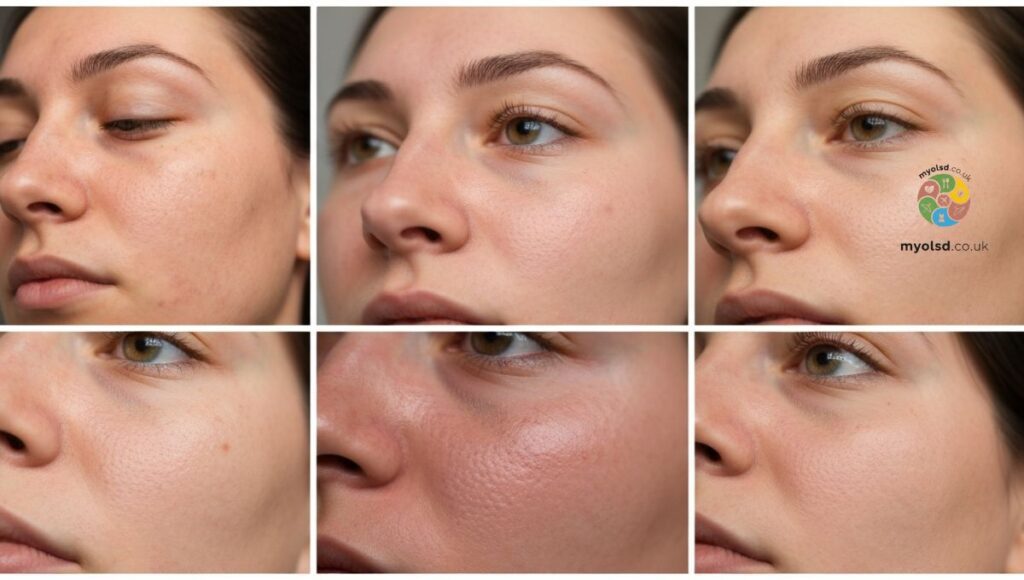
- Immediate effects: Swelling, redness, and tenderness at injection sites.
- Early recovery (Days 1 to 3): Swelling peaks; bruising may appear.
- Week 1: Swelling subsides; firmness decreases; initial results visible.
- Weeks 2 to 4: Full settling; contour refinement; tissue integration complete.
Can I Speed Up the Settling Process?
Yes! Gentle self-care can help:
- Apply cold compresses in the first 24 to 48 hours.
- Stay hydrated to aid tissue recovery.
- Avoid alcohol, excessive heat, and strenuous activity.
- Follow your practitioner’s instructions carefully.
Learn More About How Long Fillers Take to Settle
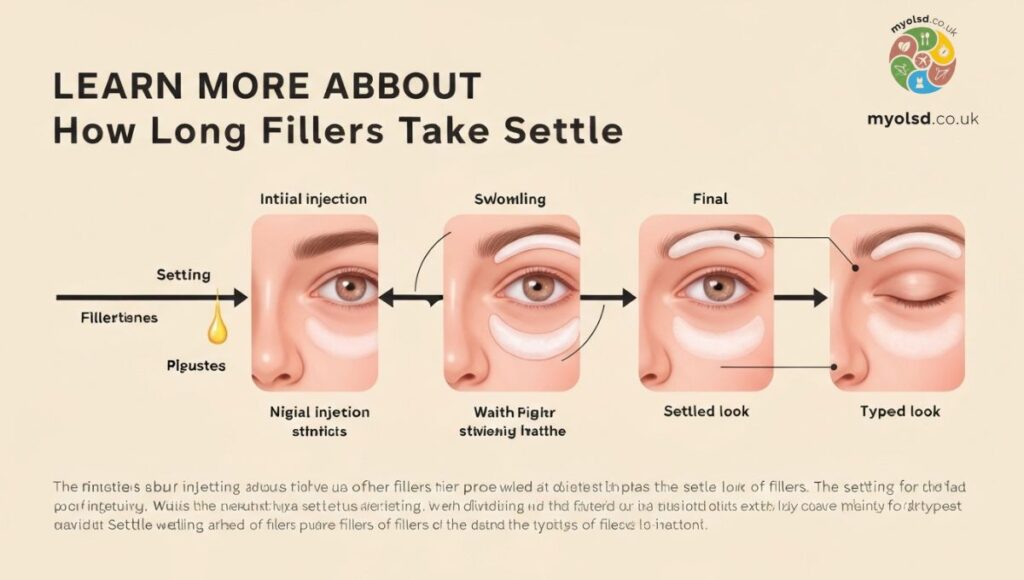
Patience is essential. Following proper aftercare ensures that your results are smooth, natural-looking, and long-lasting. Remember, even if swelling or minor lumps appear initially, they usually resolve within the normal healing timeline.
Conclusion
Understanding how long it takes for filler to settle helps set realistic expectations and reduces anxiety during the recovery period. Each facial area has unique healing dynamics, but with proper care, swelling and bruising typically diminish within 2 to 4 weeks.
By following professional aftercare advice and knowing what to expect during each stage, you can enjoy the full benefits of your dermal filler treatment. Whether it’s lips, cheeks, tear troughs, or jawline enhancements, patience and care are key to achieving a smooth, youthful, and natural-looking result.
FAQS
Do fillers look better after they settle?
Yes, fillers usually look more natural and smooth after the swelling subsides.
How long does it take for fillers to settle in the face?
Fillers typically settle within 2 to 4 weeks.
When do fillers look their best?
Fillers look their best after full tissue integration, usually 2 to 4 weeks post-treatment.
Do fillers show straight away?
Fillers show immediate results, but the final appearance improves as swelling and bruising reduce.

